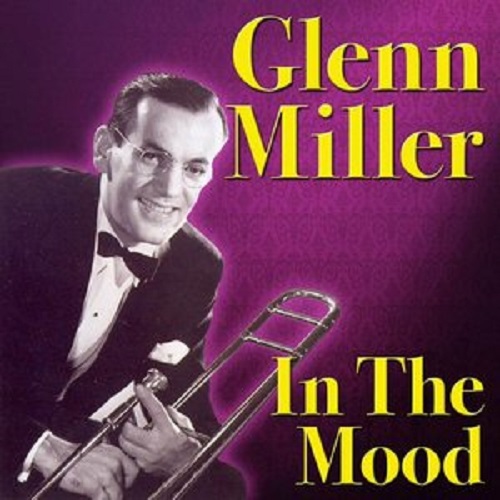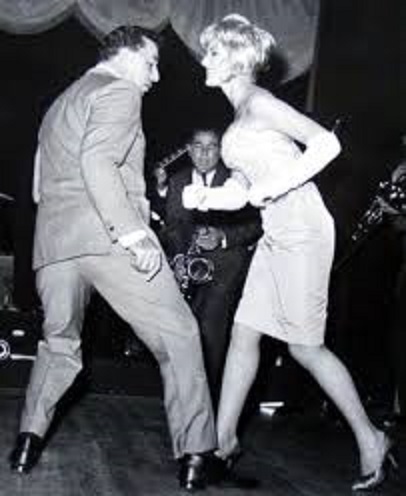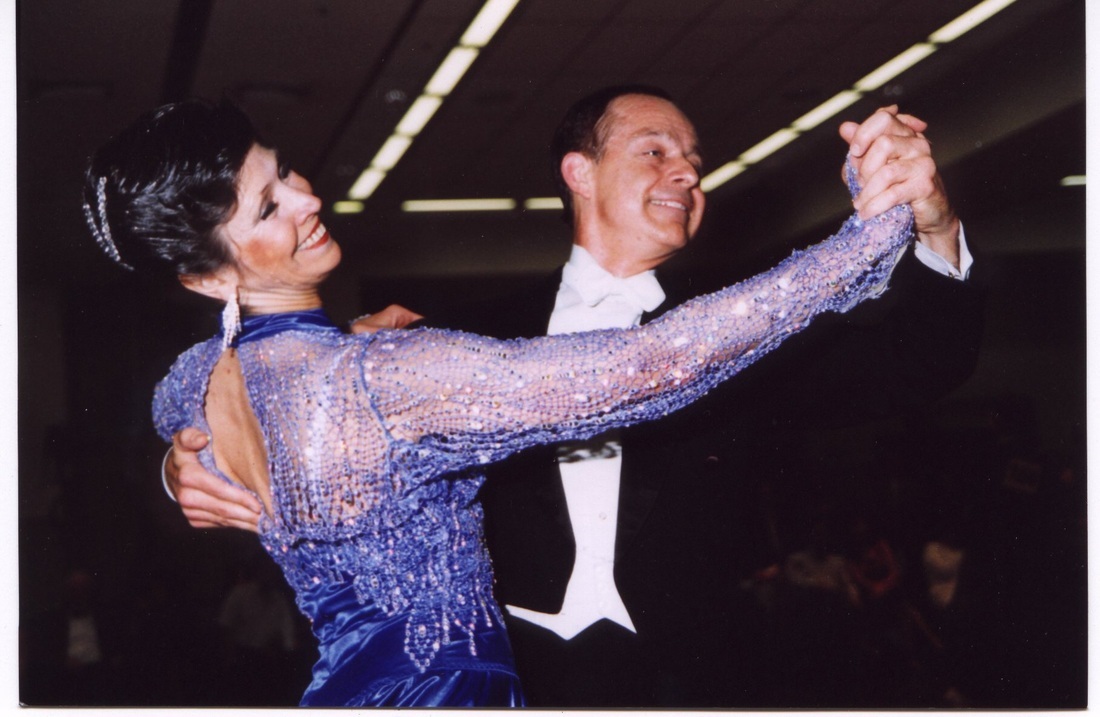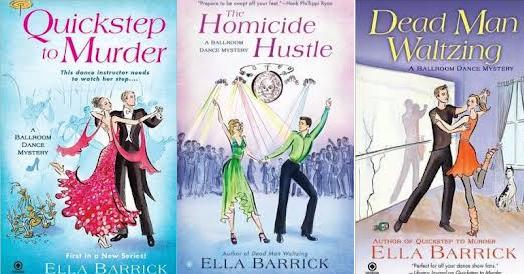The experts on musical taste formation say that our tastes are mostly formed during our 14-24 age range. For example, a 60-year-old today would relate to music popular during 1970-1980 and an 80-year-old today would relate to music from 1950-1960. Someone born after the heyday of swing (the Benny Goodman, Glen Miller, et al era), could logically say “‘In the Mood’ puts me out of the mood”. MAYBE folks who have been dancing a long time would relate to music from the time they started dancing (especially if they took a lot of lessons at that time).
Category Archives: Review/Critique
The Gresham’s Law of Social Couples Dancing Today
Gresham’s law is an economic principle that is commonly stated as: “Bad money drives out good”. But this principle has much broader applicability. For example, to social couples dancing.
Human beings have a long history of dancing in some form, be it as individuals, couples, or groups. The first couples dance Wilddancer recognizes that is still being taught and done today in most western countries is the Mazurka, which started in the 1500’s. The first Waltz (the Volta) dates back to 1556, with many variations since then. The Ländler arrived in the Austrian countryside about 1690, then moved to Vienna and a variation became the Viennese Waltz. After these came (in historical order) the couples dances Bolero, Paso Doble, Polka, Merengue, Habanara and Milonga (now Tango), Foxtrot, Rumba, Samba, Lindy Hop (later called Jitterbug), Cha Cha, Mambo, East Coast Swing, Jive, West Coast Swing, Texas Two-Step, Hustle, and Nightclub Two Step.
People who have danced for many years will tell you that the Twist killed touch dancing. If so, the “Freestyle” that people have done for the last few decades (essentially waving your butt while shifting your feet a bit) has danced on its grave. Its two main virtues are that it does not take any training and it doesn’t take much space on a dance floor (assuming that the dancers are not too drunk). But it really isn’t a guy-gal couples dance, as one sees a lot of gal-gal couples (either the guys are in short supply or have two left feet). But the net result is that the unskilled dancers are monopolizing the dance floor and displacing the skilled ones, ergo Gresham’s Law of Social Couples Dancing.
Even worse, according to an essay entitled Dancing Properly by noted British philosopher Roger Scruton, Freestyle removes the sociability of the physical contact, and perpetuates the bad manners so rampant in current times.
Practice Makes Perfect
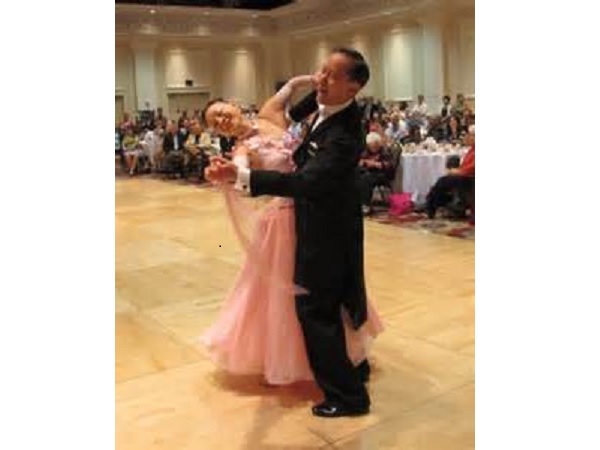
The worlds of competition dancing and social dancing don’t overlap too much. Sometimes the studios where they learn do overlap, though. Wilddancer and wife took many lessons from another Senior Champion, James Kleinrath, at the now-extinct Imperial Ballroom in Redwood City, CA, where we frequently saw Winston and Lily Chow practicing. Their devotion and discipline were admirable, and it paid off when they won a Senior Championship. James told us that to become really good dancers, one needs to enjoy practicing. Perhaps that separates competition dancers from social dancers, because we did not have the time nor the attitude to do that much practice. And we wanted to be able to do a wider range of dances than most competitors can do, enabling us to dance in a wide range of venues to a wide range of music. Plus, the social dance floor is a whole different place, with dancers of all abilities that need to be avoided, while competitors normally can expect other competitors to obey the “rules of the road”.
Creative Combination of Social and Competitive Dancing
Whether you’re already an enthusiastic social dancer, or just interested in an up-close look (from front row table seats) at world-class ballroom dancing, you might want to take advantage of a thoughtful “guided tour” during the San Francisco Open DanceSport Championships April 11-13 at the Marriott Hotel near the San Francisco Airport. Senior champs James Kleinrath and Melody Singleton, who have recently taken over the Imperial Ballroom in Redwood City (where Dancing with the Stars standout Anna Trebunskaya trained former San Francisco Forty Niners star Jerry Rice), will be the tour guides. Top dancers in all four divisions will be dancing Waltz, Tango, Foxtrot, Viennese Waltz, Quickstep, Rumba, Cha Cha, Swing, Bolero, Jive, Paso Doble, Mambo, Samba and more. Because the worlds of social and competitive dancing have recently grown apart, and because competitors are now being groomed (mostly outside the United States) to compete from an early age, these two worlds rarely overlap. Wilddancer believes taking advantage of local opportunities for promotion is all too rare in both the ballroom and country-western dance worlds, so applaud the creativity of James and Melody …who are exceptions, having started as social dancers, and are imparting their skills to social dancers. And if the past is a guide, there will be some opportunity to do social dancing during breaks in the competition, with a nice large floor and great dance music. The $50 tour will start at 8 pm on Sunday, April 13, and there is an optional dinner nearby starting at 5:30 pm. Contact James Kleinrath, at 650-591-6757 or jameskleinrath@hotmail.com.
Murder Mystery Books Set in Dance Studio
A series of murder mysteries—Quickstep to Murder, Dead Man Waltzing, and The Homicide Hustle–with a beautiful and adventuresome heroine who is half-owner of a dance studio has lots of entertaining action that might inspire a movie or two. Author Ella Barrick makes no claim to be an expert dancer, but her sources on studio owner, dance teacher, and student behavior know their stuff. She even parodies Dancing with the Stars, with the thinly-disguised “Ballroom with the B-Listers”. Wilddancer liked the Quickstep and Hustle ones best, but all three are easy to read and good entertainment for non-dancers and dancers alike. And they put the romance back into dancing.
We need another good dance movie or two to get people excited about couples dancing again. Dancing with The Stars and So You Think You Can Dance are good entertainment, but they’re reality shows intended for watching (and making money for TV networks). And they are increasingly featuring dance types that social dancers can’t do. We hope that Hollywood beckons to the author and produces a film as good as Strictly Ballroom (1992) or Shall We Dance? (the Japanese one in 1996).
Annual Dance Conference Excels
The dance world is rapidly reaching critical mass, if developments at the combined conference of the World Dance Alliance-Americas (WDA-A) and the Dance Critics Association (DCA) held at the one-of-a-kind Scotiabank Dance Center in Vancouver, BC, Canada during July 29-August 4 are any indication. Highlights included world-class innovative dance routines, strong coverage of the burgeoning urban dance category, a brand-new dance journal, expansion of the WDA to Europe with a fully worldwide conference in Angers (France) in 2014, and a massive government effort to catalog and measure dance in all its forms within Canada. The event was all the more noteworthy because the two organizations are all-volunteer ones, so all the heavy lifting was being done as a labor of love. WDA-A Conference Committee Chairman Scott Martin was everywhere, and did a terrific job before and during the event
The conference focused on dances that are performed for audiences, so the only participants who actually dance are the performers on stage, who take part in “concerts”. In social couples dancing, which—with the exception of Wilddancer—was essentially unrepresented at this conference, there is no audience, everyone participates, and the events are called “parties”. But the WDA-A seems happy to include all forms of dancing, so we will likely see and hear more about social couples dancing in the future, with support from Wilddancer. And with the strong feeling that the organization wanted to be inclusive, to welcome all forms of dance, and to chronicle changes in the dance world as they happen, the WDA-A is in a strong position to grow and adapt. We expect that social couples dancing will be the beneficiary as rhythms and movements from other categories, or even whole new dances, are integrated into what is already being practiced in ballrooms and club venues. We are particularly interested to see what, if any, changes will come via a flow from urban dance (AKA hip hop or break dancing), which is already a social phenomenon but not specifically for couples.
(During the DCA portion of the conference veteran critic George Jackson pointed out an interesting overlap between ballet and lindy hop. Pioneering dance critic Carl Van Vechten wrote in 1930 that the new Lindy Hop would likely follow the pattern he had observed with the Cake Walk, Bunny Hug, Turkey Trot, Charleston, and Black Bottom, in which roughly every decade a black dancer would invent a new step that would become popular with black (and sometimes with white) dancers. Whether or not it was ever done, Van Vechten pointed out that the Lindy Hop “could be danced, quite reasonably, and without alteration of tempo, to many passages in the Sacre du Printemps [Rite of Spring] of Stravinsky” (see Swinging the Machine: Modernity, Technology, and African American Culture between the World Wars, by Joel Dinerstein, University of Massachusetts Press, 2003.))
Decadance Group Crafts Performances from Social Couples Dancing
Stanford University has been a driving force for technology companies starting in 1939 when Bill Hewlett and Dave Packard founded Hewlett-Packard, and its graduates have created many giant companies in electronics, software, and other fields. But Stanford is also on the cutting edge of couples dancing, perhaps most notably through the vision and energy of Richard Powers. One of the innovative groups that has sprung from this supportive environment is Decadance (a subtle pun on “decadence”), which bills itself as “a social dance performance group that strives to make traditional couple-dancing less traditional”. This team is unlike many of the other teams you can see on TV or YouTube, whose choreography is either secondary to their crazy costumes or outrageous-but-baseless dance steps, because they craft their performances from time-tested dances like waltz, swing, tango, and cha cha. Wilddancer attended their Spring Show 2013: “how I met your mother” tonight. It was terrific! The members of the group had created all of the 15 professional-grade routines (though some of them came from previous performances); such good choreography takes a lot of skill and a lot of time. And the quality of the dancing matched the quality of the choreography. (We could parse many of the figures using our own social dance training, and they were often advanced ones.) You wonder how they can do it AND keep up their studies at a demanding university like Stanford.
New Waltzing Book by Powers & Enge
Teaming up with Nick Enge, Stanford’s Richard Powers has extended his already wide-ranging coverage of new and old variations on the waltz to extol the benefits to one’s living style in “Waltzing: A Manual for Dancing and Living”. All ballroom dancers are familiar with the slow waltz, and more advanced ones with the fast Viennese waltz, but far fewer with the new cross-step waltz, and likely fewer with the older mazurka and hambo. And the truly adventuresome waltz geeks will want to try the five-step waltz and seven-step waltz, naturally in 5/4 time and 7/4 time respectively. Likewise, the authors have broadened the list the usual benefits of music, physical activity, and touch to include such aspects of living itself as social relationships, smiling/laughing, and giving. In keeping with the times, the publication of the book was crowd-funded. Sign up for a pre-publication copy ($20) here. Copies should be available in early June.

